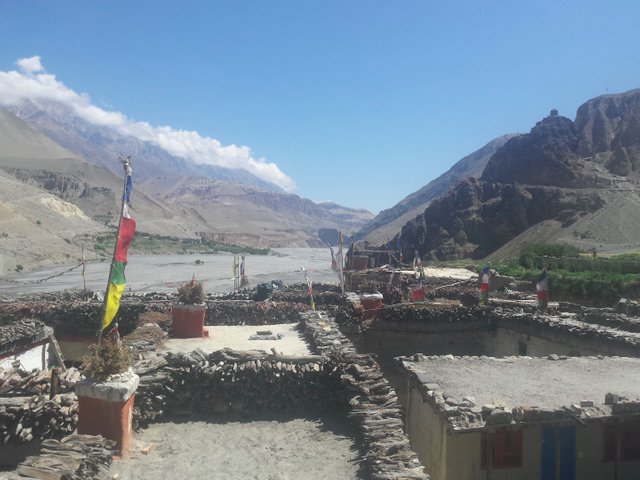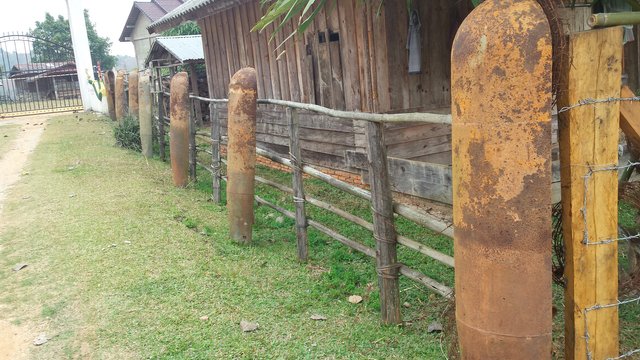How Rural Unbanked Store Wealth---And How Cryptocurriencies May Change Everything

In Kagbeni, Nepal, a village of fewer than 1,000 people nestled high in the Himalayas, rupees change hands inside shops and barley is traded for buckwheat in the streets, but there is no modern way to store wealth. The nearest bank is a three-hour hike away; while most villagers have a drawer or plastic bag filled with badly worn rupees, few bother making routine deposits or withdrawals. So when a family finds themselves with a little extra money, or in need of some, they look to their rooftops, where the Kagbeni version of a savings account is neatly stacked.
“We keep some wood inside for burning,” says Tenzin Namgyal, 39, who farms barley and buckwheat in irrigated fields along a nearby river. “We don’t touch the wood on the roof—unless we really need money. Then we can sell it.”
The wood on Namgyal’s roof, like most roofs in Kagbeni, has not been moved in years; it’s caked in a layer of dust. The Himalayas create a rain shadow in the area, and the dry air keeps the wood from rotting. That’s fortunate, since the nearest forested area is a four-hour hike away.
“I cut some of this wood when I was a child with my father,” says Namgyal.
Yeshe Gurung, 25, teaches Tibetan at the monastery in Kagbeni. He lives a two-hour hike away, in Dhakar Jhong, a village of about 30 houses perched on a mountainside. The rooftops there are also lined with firewood.
“When my family has extra money, we buy wood and stack it on the roof,” says Gurung. “When we need money, we sell some.”
As a general rule, banks set up branches and financial services where they think they can make a profit. Regions with low population density, as well as communities that tend not to have large savings, are unattractive to banks. What results are banking deserts, whose residents have minimal access to mainstream financial services.
The World Bank estimates that some 38% of adults worldwide are “unbanked,” a number that climbs to 70% in Nepal. As in many developing countries, cash in Nepal isn’t a good store of value: The country’s average annual inflation rate is above 8%. Cash reserves are also susceptible to loss, theft or damage. (By contrast, firewood theft is uncommon. In a village of 1,000, it would be easy to suss out a perpetrator.)
“Communities without access to banks will find other ways to store wealth,” explains Grace Tsiang, co-director of the University of Chicago’s College of Economics. “They can use commodities that retain value over time.”
Nepal’s firewood is just one example—anything that is locally available, can be easily traded, and has a limited supply can be used to store wealth. In India, gold is popular. Livestock is common in much of the developing world. In Laos, where the annual inflation rate has topped 20% for the past two decades, unexploded bombs from the Vietnam War litter the landscape and locals stack found casings in front of their homes. The casings can be used for everything from fence posts to flower pots, and scrap-metal dealers roam the countryside, ready with cash for anyone willing to sell them.

Going mobile
Mobile devices are also changing the financial landscape—in some countries, the unbanked use minutes as a way to transfer and store wealth. But the phones themselves are also providing expanded access to banking services.
Telecommunications companies in Africa have already begun to capitalize on this trend. Kenya’s M-Pesa, a mobile phone-based branchless banking service, launched in 2007 and now has more than 20 million users, previously unbanked.
“The next five years are going to be super interesting,” says Carol Realini, co-author of Financial Inclusion at the Bottom of the Pyramid and founder of mobile payment network Obopay. “As smartphones enter [rural unbanked] areas, there will be a natural pull to participate in electronic commerce and they could start to replace tribal currencies.”
Another potential alternative for the unbanked: cryptocurrencies such as bitcoin. Thus far, mobile banking has been dominated by sovereign currencies—bitcoin has made little headway in the area—and there are still many unknowns surrounding electronic currencies. There are, however, a number of bitcoin start-ups emerging with potential for growth.
“Once the technology is there and people say ‘wow, here’s a better way,’ things can happen pretty quickly,” says Realini. “It could be that they skip the sovereign currency and go straight from firewood to bitcoin.”
For Namgyal and Gurung, that future still seems far-fetched. Kagbeni was only added to the electrical grid in 2009; a handful of its hotels and restaurants have internet, but the power and Wi-Fi are unreliable at best. Dhakar Jhong, an agricultural village without a general store or restaurant, has no internet access. While the future of savings may be on its way, for now they’ll keep stacking wealth on their roofs.
I upvoted You
Interesting article. Good read
https://steemit.com/@vasilii/posts
Hi. I posted the above article. I am a journalist and originally wrote it for Quartz. I have modified it slightly to try to make it more appealing to this audience and own the rights. I'm new here and do not know the protocol on these things, please let me know if there is something I should do different. I also tried to add this note within the text but for some reason that would not post---I may be fascinated with these topics but I'm not always great with new/ unfamiliar technologies. Cheers!
Upvoted
Hi! This post has a Flesch-Kincaid grade level of 10.6 and reading ease of 56%. This puts the writing level on par with Michael Crichton and Mitt Romney.